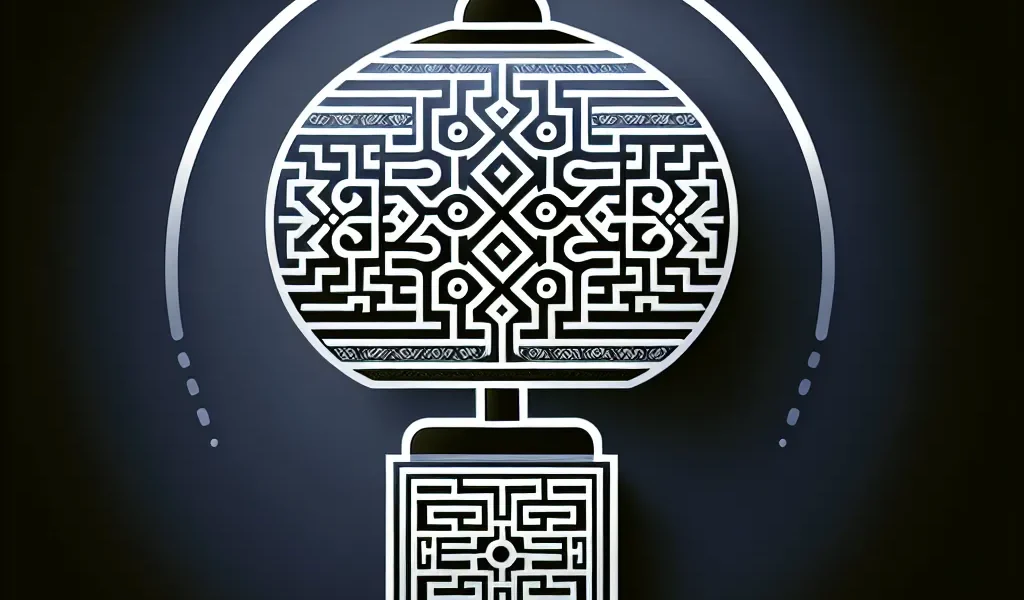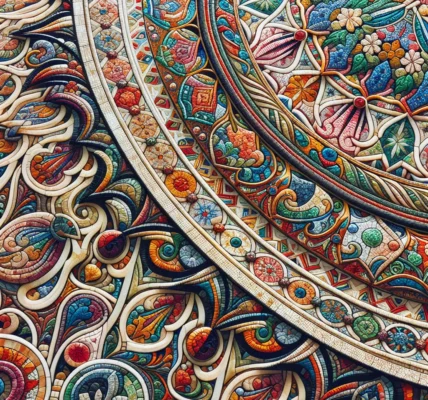Evolution of Ornamental Design in the 21st Century
The 21st century has brought an evolution in the interpretation of ornaments in design. Traditionally, ornaments were used to adorn objects with intricate patterns and decorative elements. However, in modern design, the concept of ornamentation has expanded to encompass a wide range of styles and influences. From minimalist and geometric patterns to organic and nature-inspired motifs, the modern interpretation of ornaments in design reflects a shift towards a more eclectic and inclusive approach.
One of the key aspects of the evolution of ornamental design in the 21st century is the integration of technology and digital tools. Designers now have access to advanced software and fabrication techniques that allow for the creation of intricate and complex ornamentation with precision and efficiency. This has opened up new possibilities for experimenting with different forms, textures, and dimensions, leading to innovative and futuristic ornamentation concepts.
Furthermore, the 21st century has seen a resurgence of interest in traditional craftsmanship and artisanal techniques, influencing the ornamental design. There is a growing appreciation for handcrafted ornaments that celebrate the uniqueness and imperfections of handmade artistry. This revival of traditional techniques has contributed to a rich tapestry of ornamental design, blending the old and the new in a harmonious way.
In addition, the evolution of ornamental design in the 21st century is marked by a focus on sustainability and environmental consciousness. Designers are incorporating eco-friendly materials and practices into their ornamentation, reflecting a deeper awareness of the impact of design on the planet. This has led to the development of ornamental designs that not only serve an aesthetic purpose but also convey a message of sustainability and ethical responsibility.
In conclusion, the evolution of ornamental design in the 21st century has been shaped by technological advancements, a renaissance of traditional craftsmanship, and a growing emphasis on sustainability. As design continues to evolve, the interpretation of ornaments is expected to diversify further, creating an exciting and dynamic landscape of ornamental design.
Balancing Tradition and Innovation: Ornaments in Contemporary Design
When it comes to contemporary design, one of the key challenges is finding the balance between tradition and innovation, especially when it comes to the interpretation of ornaments. Ornaments in design have a rich historical significance, often associated with traditional craftsmanship and cultural symbolism. However, in the context of modern design, the interpretation of ornaments has evolved to embrace innovation while still honoring traditional aesthetics.
Contemporary designers are reimagining traditional ornaments by incorporating them into sleek and minimalist designs, thus creating a harmonious fusion of the old and the new. This approach allows for the preservation of cultural heritage while adapting to the modern sensibilities of the audience. The reinterpretation of traditional ornaments in contemporary design also allows for greater personalization and customization, enabling designers to create unique and meaningful pieces that resonate with the audience on a deeper level.
Furthermore, advancements in technology have provided new opportunities for the integration of ornaments in contemporary design. From 3D printing to digital modeling, designers now have the tools to experiment with intricate ornamentation in ways that were previously not possible. This seamless integration of traditional ornamentation with cutting-edge technology showcases the potential for innovation within the realm of contemporary design.
In conclusion, the modern interpretation of ornaments in design successfully strikes a delicate balance between tradition and innovation. By integrating traditional craftsmanship with modern aesthetics and technological advancements, contemporary designers are able to create visually stunning and culturally rich designs that resonate with today’s diverse audience.
The Influence of Technology on Modern Ornamental Design
The influence of technology on modern ornamental design has significantly transformed the way designers approach and create ornaments in contemporary design. With the advancement of technology, designers now have access to a wide range of tools and techniques that have redefined the concept of ornamentation in design.
One of the key aspects of technology’s influence on modern ornamental design is the use of computer-aided design (CAD) software. CAD software allows designers to create intricate and complex ornamental patterns with precision and efficiency. This technology enables designers to experiment with a variety of shapes, patterns, and textures, pushing the boundaries of traditional ornamentation.
Furthermore, the emergence of 3D printing technology has revolutionized the production of ornamental elements in design. Designers can now translate their digital ornamental designs into physical objects with the use of 3D printing, opening up a new realm of possibilities for creating unique and customized ornamental pieces.
Moreover, the integration of digital fabrication techniques such as laser cutting and CNC machining has also played a significant role in shaping modern ornamental design. These technologies allow designers to produce ornamental elements with intricate details and precision that would have been challenging to achieve using traditional methods.
In addition to the production aspect, technology has also influenced the conceptualization of ornamental design. Designers are now able to draw inspiration from a vast digital archive of historical ornamental styles and reinterpret them in a contemporary context. This fusion of traditional and modern aesthetics has led to the creation of ornamental designs that are both nostalgic and innovative.
In conclusion, the influence of technology on modern ornamental design has resulted in a dynamic and innovative approach to ornamentation in contemporary design. From the conceptualization to the production of ornamental elements, technology has paved the way for designers to explore new possibilities and redefine the boundaries of ornamental design in the modern era.
Reimagining Cultural Ornaments in Today’s Design Landscape
The modern interpretation of ornaments in design has brought about a reimagining of cultural ornaments in today’s design landscape. In the contemporary design scene, there is a growing appreciation for the incorporation of cultural ornaments from diverse traditions into modern design concepts. This reimagining involves a respectful acknowledgment of the historical and cultural significance of these ornaments while adapting them to suit the aesthetics and functional requirements of contemporary design.
Designers are increasingly drawing inspiration from a wide array of cultural ornaments, including motifs, patterns, and symbols that have deep-rooted cultural meanings. By integrating these elements into their designs, they seek to celebrate and honor the rich cultural diversity of our world. This approach not only adds a unique and authentic dimension to modern design but also fosters cross-cultural understanding and appreciation.
The reimagining of cultural ornaments in today’s design landscape also involves a thoughtful balance between preservation and innovation. While the essence of traditional ornaments is retained, designers often reinterpret them in fresh and innovative ways, catering to contemporary tastes and design trends. This fusion of tradition and modernity results in designs that resonate with a broad audience while preserving the cultural legacy encapsulated in the ornaments.
Moreover, the reimagining of cultural ornaments in design is not just a superficial aesthetic trend; it reflects a broader movement towards inclusivity and cultural awareness in the design industry. By leveraging the symbolic power of cultural ornaments, designers have the opportunity to convey stories, values, and aspirations, transcending linguistic and cultural barriers.
In conclusion, the reimagining of cultural ornaments in today’s design landscape represents a dynamic shift towards embracing cultural diversity, fostering inclusivity, and creating designs with depth and meaning. By infusing modern design with the essence of traditional cultural ornaments, designers can bridge the past and the present, offering a visual tapestry that reflects the richness of our global heritage.


